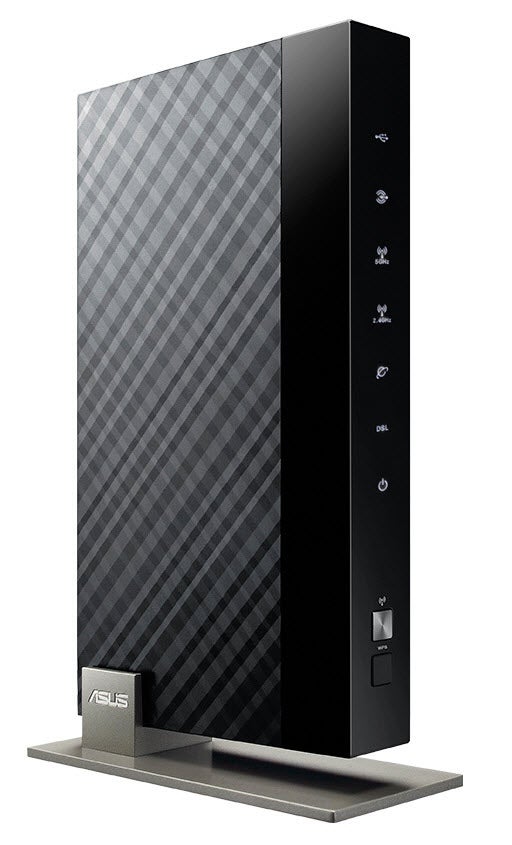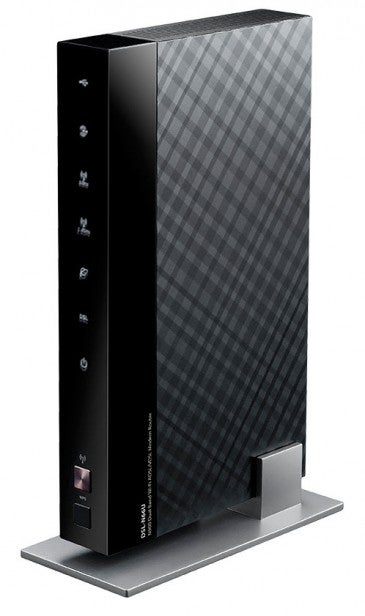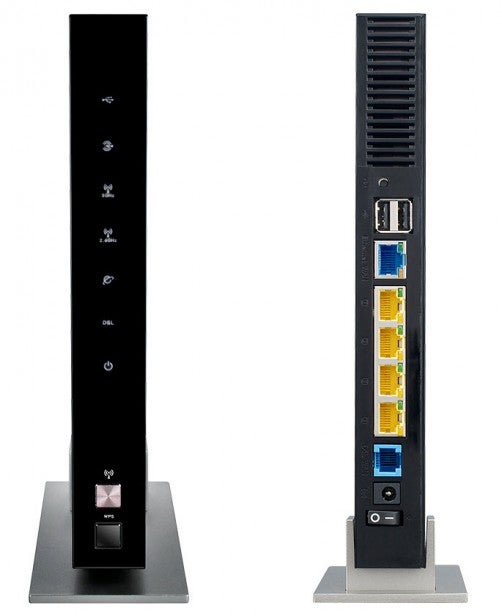Asus DSL-N66U Review
Asus DSL-N66U
The best 802.11n DSL router on the market.

Sections
- Page 1 Asus DSL-N66U Review
- Page 2 Setup, Performance & Verdict Review
Verdict
Pros
- Superb 802.11n performance
- Stylish design
- Intuitve UI
- Future-proof model
Cons
- RRP close to 802.11ac routers
- Odd quirk in the setup process
- Asus still lacks a Cloud platform
Key Specifications
- Review Price: £129.99
- Dual band 802.11a/b/g/n WiFi
- 4x Gigabit Ethernet
- 1x Gigabit WAN
- VDSL2 modem
- WPS, WPA/WPA2 security
- 2x USB 2.0
- AiCloud media sharing
What is the Asus DSL-N66U?
Do you remember the Asus RT-N66U? It is arguably the best performing dual band 802.11n router currently on the market and predecessor to the superb 802.11ac compatible RT-AC66U. Now Asus is expanding the 66U brand again with a VDSL2 modem packing version of the N66U that is compatible with the latest fibre optic broadband standards.
Interestingly there is a distinct lack of competition in this sector. The Netgear D6300 packs 802.11ac but a modem without support for fibre speeds and the fibre ready FRITZ!Box 3390 has mediocre wireless performance. With the run Asus’ routers are on it can make serious waves.

Asus DSL-N66U – Design
Somewhat surprisingly the DSL-N66U is a fairly radical design departure from its modem-less predecessor. At 250 x 155 x 65mm and 820g is understandably bigger and heavier, but it also switches from a horizontal to vertical orientation which helpfully reduces the desktop footprint and projects its signal from a higher point. This makes sense given the DSL-N66U also ditches the characteristic extra antennas that give Asus router’s their hotrod look.
Overall we’re fans of the design and what draws equal praise is the quality of construction. Typically routers are a perfunctory collection of thin plastics, but the DSL-N66U has a fixed heavy metal base which makes it look like the company’s EEE Box PCs of yesteryear and keeps it firmly in place.
In addition the extra internals mean the DSL-N66U has none of the hollow feel of dedicated routers while the company’s customary checkered finish looks smart from all angles. The downside to this design is it cannot be wall mounted and in packing the modem the DSL-N66U also requires a separate hockey puck-sized PSU.

Asus DSL-N66U – Features
Integrating a modem adds significant size and cost so it is a good thing that Asus has gotten the ‘DSL’ part of it right. The VDSL2 modem can handle broadband speeds up to 250Mbit and is backwards compatible with VDSL, ADSL2 plus, ADSL2 and ADSL. All that is out of reach is Virgin’s cable modem standard.
On the WiFi front Asus has also gone for full fat 802.11n with support for 2.4GHz and 5GHz dual bands and a 3×3 internal antenna array. There’s a strong feature set on top of this as well with 4x Gigabit Ethernet, Gigabit WAN (for connecting to a Virgin Media modem if you want), IPv6 compatiblity, WPA/WPA2 and WPS security and a dedicated WiFi on/off button to easily put it into modem mode.
Aside from 802.11ac (the hit and miss EE Bright Box 2 remains alone for now in combining this with a VDSL modem) the only other notable omission from the DSL-N66U is USB 3.0. Asus has added a pair of USB 2.0 ports, but in truth USB speeds over a network have yet to push the boundaries of this standard so it isn’t a big miss.
Furthermore, being an Asus router, the DSL-N66U comes equipped with the company’s AiCloud functionality. This allows users to share media from USB connected storage remotely. This is handy, though it doesn’t compete with Linksys’ more fully fledged Smart WiFi which gives complete access to router settings and WD’s impressive My Cloud.

